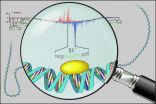NASA sees Tropical Cyclone Haliba affecting La Reunion and Mauritius islands
2015-03-09
(Press-News.org) Tropical Cyclone Haliba formed east of the island nation of Madagascar in the Southern Indian Ocean and is now affecting the La Reunion and Mauritius islands. NASA's Terra satellite passed over Haliba on March 9 and captured an image of the storm that showed the eastern quadrant was affecting the two smaller islands.
The Moderate Resolution Imaging Spectroradiometer (MODIS) instrument aboard NASA's Terra satellite captured a visible image of Tropical Cyclone Haliba on March 9 at 06:35 UTC (2:35 a.m. EDT). The image showed both La Reunion and Mauritius islands were covered by a thick band of thunderstorms east of Haliba's center.
At 0900 UTC (5 a.m. EDT) Tropical cyclone Haliba had maximum sustained winds near 40 knots (46 mph/74 kph). It was moving to the southeast at 6 knots (6.9 mph/11.1 kph) and is expected to continue moving in that general direction. Haliba was centered near 21.3 south latitude and 53.9 east longitude, just 85 nautical miles (97.8 miles/157.5 km) west of La Reunion Island.
Forecasts for La Reunion are managed by the Regional Specialized Meteorological Centers (RSMC) at Toulouse (Meteo-France). RSMC posted warnings for heavy rain and gusty winds for La Reunion on March 9. For updated track information and forecasts, visit RSMC: http://www.meteofrance.re/cyclone/activite-cyclonique-en-cours
The Joint Typhoon Warning Center (JTWC) forecast calls for Haliba to move southeast over the next several days, while intensifying to 55 knots. After four days, the storm is expected to run into adverse environmental conditions (increased vertical wind shear and cooler sea surface temperatures) that will lead to its dissipation.
INFORMATION:
[Attachments] See images for this press release:

ELSE PRESS RELEASES FROM THIS DATE:
2015-03-09
Although many people value receiving information about incidental findings identified from genomic sequencing, not everyone wants to know about genetic conditions regardless of potential health implications, found a study of Canadian preferences in CMAJ (Canadian Medical Association Journal).
An incidental finding refers to discovery of a genetic condition that may cause a disease, but the finding is unrelated to why genomic testing was initially ordered by the physician. For example, a test to determine if there is a genetic cause of a patient's colon cancer may find ...
2015-03-09
In a screen of more than 100,000 potential drugs, only one, harmine, drove human insulin-producing beta cells to multiply, according to a study led by researchers at the Icahn School of Medicine at Mount Sinai, funded by JDRF and the National Institutes of Health, and published online today in Nature Medicine.
Diabetes results from too few insulin-producing "beta cells" in the pancreas secreting too little insulin, the hormone required to keep blood sugar levels in the normal range. The disease affects 380 million people worldwide, and leads to major medical complications: ...
2015-03-09
COLLEGE PARK, Md. -- An analysis of changes to the climate that occur over several decades suggests that these changes are happening faster than historical levels and are starting to speed up. The Earth is now entering a period of changing climate that will likely be faster than what's occurred naturally over the last thousand years, according to a new paper in Nature Climate Change, committing people to live through and adapt to a warming world.
In this study, interdisciplinary scientist Steve Smith and colleagues at the Department of Energy's Pacific Northwest National ...
2015-03-09
Activity in a brain area known as the dorsal posterior insula is directly related to the intensity of pain, a brain imaging study of 17 people has found.
Researchers at the Oxford Centre for Functional Magnetic Resonance Imaging of the Brain used a new brain imaging technique to look at people experiencing pain over many hours. Activity in only one brain area, the dorsal posterior insula, reflected the participants' ratings of how much the pain hurt.
These results, published in the journal Nature Neuroscience, could help detect pain in people with limited communication ...
2015-03-09
Scientists have discovered another 15 genetic 'hot-spots' that can increase a woman's risk of developing breast cancer, according to research published today (Monday) in Nature Genetics.
In a study funded by Cancer Research UK*, scientists compared tiny variations in the genetic make-up of more than 120,000 women of European ancestry, with and without breast cancer, and identified 15 new variations - called single nucleotide polymorphisms (SNPs) - that are linked to a higher risk of the disease.
This new discovery means that a total of more than 90 SNPs associated with ...
2015-03-09
Kansas City, MO. -- All the cells in an organism carry the same instruction manual, the DNA, but different cells read and express different portions of it in order fulfill specific functions in the body. For example, nerve cells express genes that help them send messages to other nerve cells, whereas immune cells express genes that help them make antibodies.
In large part, this highly regulated process of gene expression is what makes us fully functioning, complex beings, rather than a blob of like-minded cells.
Despite its importance, researchers still do not completely ...
2015-03-09
PHILADELPHIA--Treating metastatic melanoma with a triple threat--including radiation therapy and two immunotherapies that target the CTLA4 and PD-1 pathways--could elicit an optimal response in more patients, one that will boost the immune system's attack on the disease, suggests a new study from a multidisciplinary team of researchers from Penn's Abramson Cancer Center published today in Nature.
The study, led by senior authors Andy J. Minn, MD, PhD, assistant professor of Radiation Oncology, Robert Vonderheide, MD, DPhil, the Hanna Wise Professor in Cancer Research, ...
2015-03-09
A collaborative effort between investigators at the Yerkes National Primate Research Center, Emory University School of Medicine and Georgia Institute of Technology has led to the development of a non-invasive method to image simian immunodeficiency virus (SIV) replication in real-time, in vivo.
This approach, which is reported today in Nature Methods' Advance Online Publication, is based on immune positron-emission tomography/computed tomography (PET/CT) and allows for the capture of viral dynamics of SIV, the animal model of human HIV infection. This novel approach ...
2015-03-09
A new study of acute lymphoblastic leukemia (ALL), a blood cancer that primarily affects young children, has revealed that the disease has two distinct subtypes, and provides preliminary evidence that about 13 percent of ALL cases may be successfully treated with targeted drugs that have proved highly effective in the treatment of lymphomas in adults.
Usually emerging in children between 2 and 5 years of age, ALL occurs when the proliferation of white blood cells known as lymphocytes spirals out of control. The current standard of care for ALL employs high doses of chemotherapy ...
2015-03-09
A process that is too fast to be measured and analysed. Yet a group of international scientists did not lose heart and conceived a sort of highly sophisticated moviola film-editing system, which allowed them to observe - for the first time in a direct manner - an effect underlying high-temperature conductivity. The results of their work have been published in Nature Physics on Monday 9 March 2015.
Superconductors have properties that make them potentially very interesting for technology (examples of application include magnetic levitation trains). The road to a true application ...
LAST 30 PRESS RELEASES:
[Press-News.org] NASA sees Tropical Cyclone Haliba affecting La Reunion and Mauritius islands

